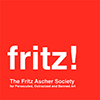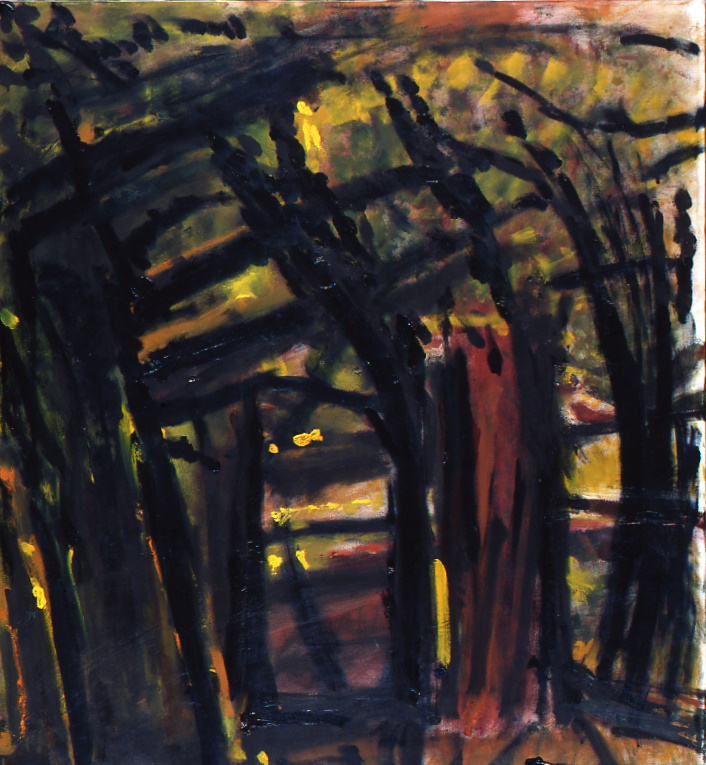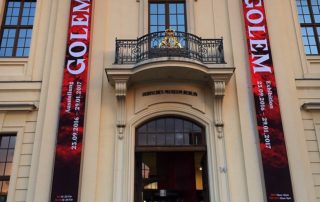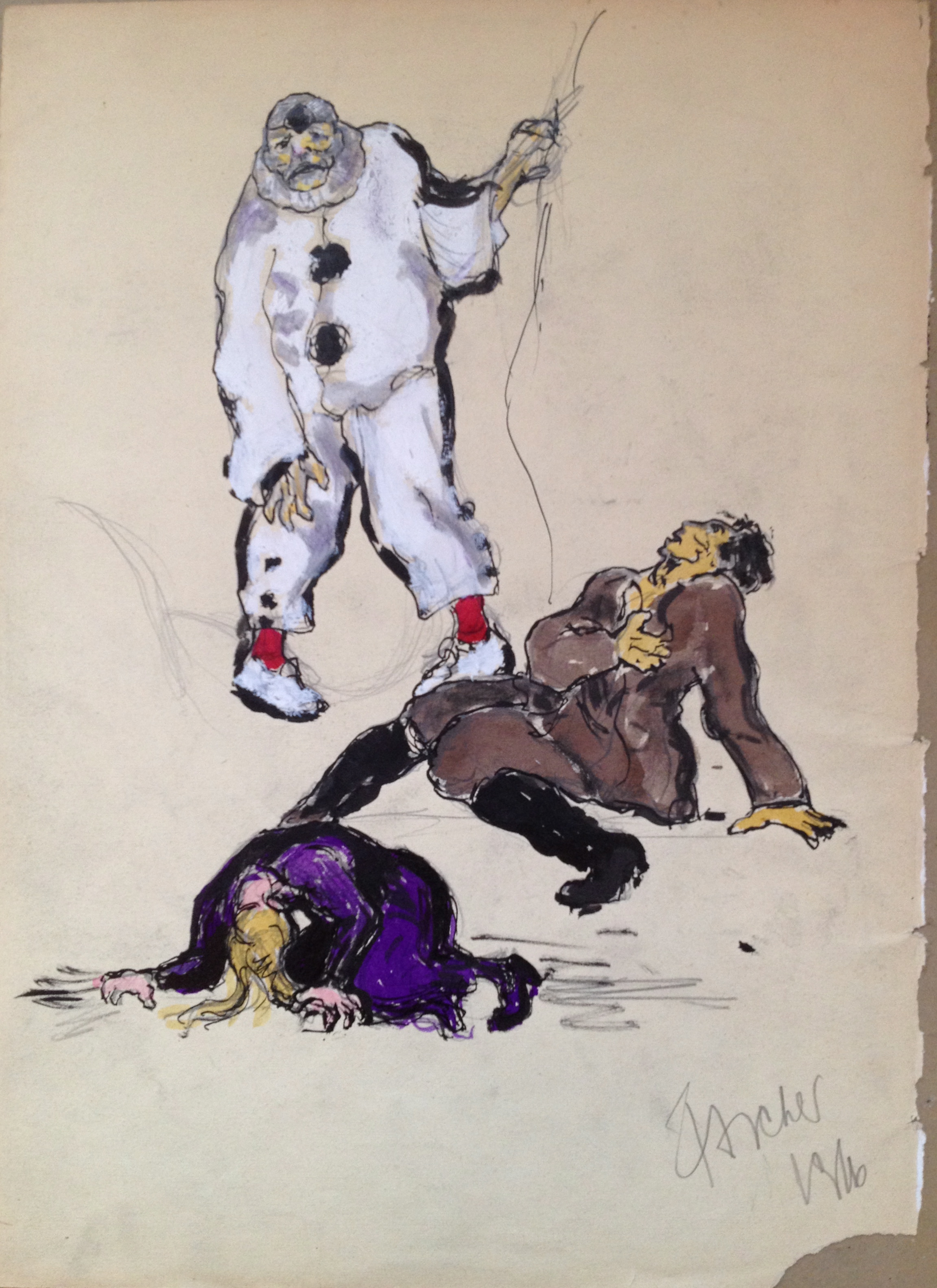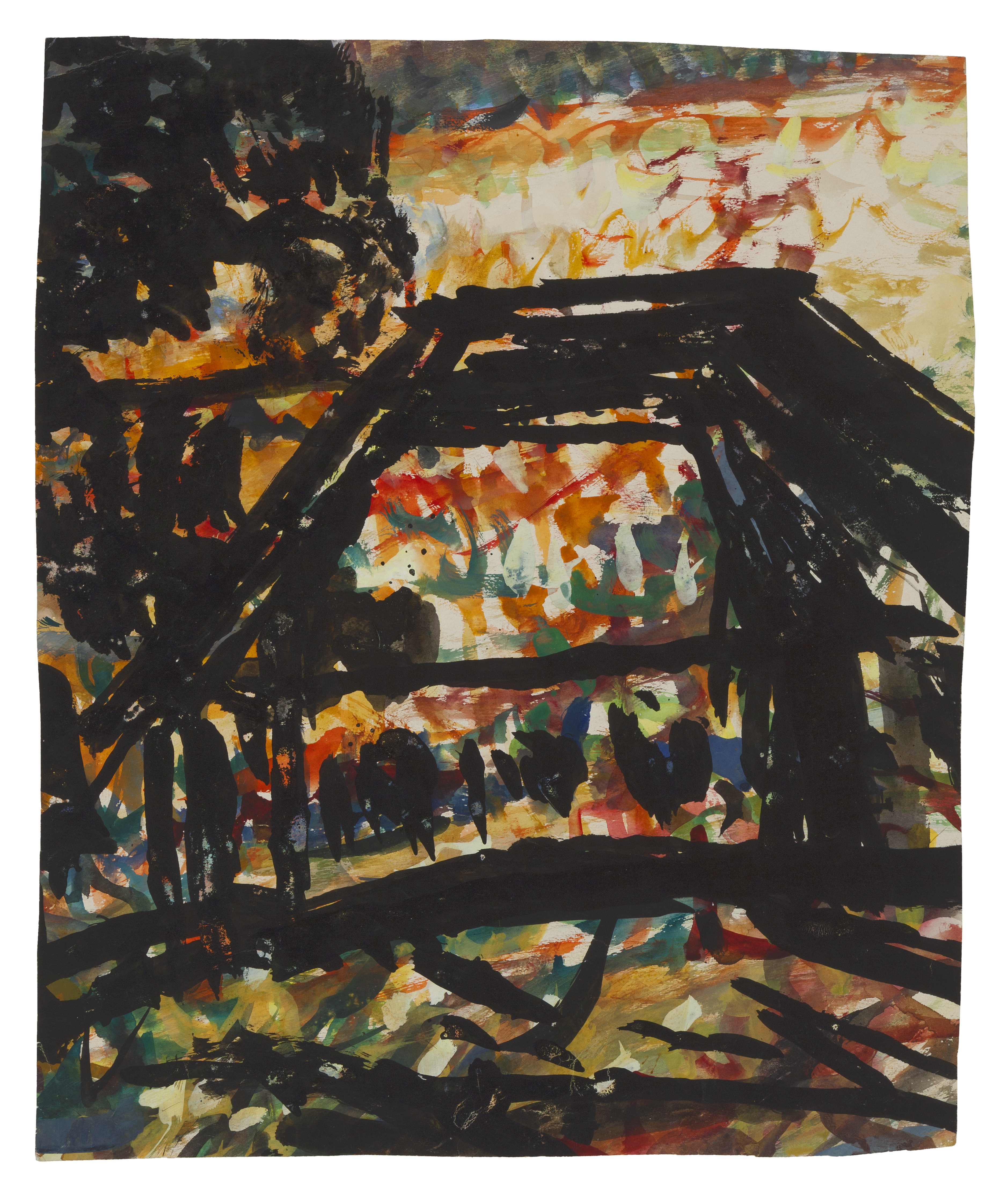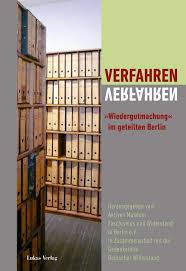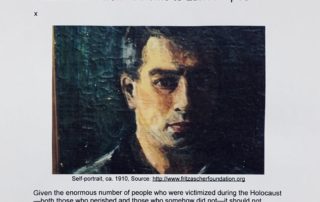Newsletter #6, May 2016
Rachel Stern2018-12-04T12:44:40-05:00May 19th, 2016|Newsletter|
Dear Friends, As we are drawn to spend more time outside in the lovely spring weather, this newsletter is all about Fritz Ascher’s late landscapes that became the focus of his work after 1945. Trees, late 1950s ©Bianca Stock, Munich Frank Auerbach, Mornington Crescent Looking South, 1997 ©Frank Auerbach, courtesy Marlborough Fine Art In dozens and dozens of intense paintings and gouaches intoxicated with color, Ascher turns to nature painting in the broadest sense. Among them are landscapes, woodland scenes, portraits of individual trees, groups of trees, all inspired by hours of walking in the nearby Grunewald. In his catalogue essay accompanying the upcoming Fritz Ascher retrospective, Eckhart Gillen relates the aesthetic practice and behavior of the two painters Fritz [...]
Rachel Stern2018-12-03T17:37:55-05:00February 4th, 2016|Exhibitions, Past Exhibitions|
Fritz Ascher's monumental painting "Golem" from 1916 is part of the exhibition "Golem" at the Jewish Museum Berlin (September 23, 2016 - January 29, 2017).websiteThe myth of the human being that can create new life is the central theme of the large thematic exhibition "Golem" at the Jewish Museum Berlin. Until today the most prominent Jewish legendary figure inspires generations of artists and writers. The exhibition presents the Golem from its Jewish mystical source to popular narratives for film or in artistic and digital media. Formed in clay or dust, a being is brought to life by mystical rituals including Hebrew letter combinations. Created by a human being, the Golem becomes a helper, a companion or the savior of a [...]
Rachel Stern2018-12-04T12:45:14-05:00February 4th, 2016|Newsletter|
Dear Friends, As I am writing this newsletter, the snow is (still) melting here in New York after one of the largest snow storms in recent history. At the same time, Carnival is in the air - at least for our German friends. What better moment to introduce Fritz Ascher's clowns - a theme that occupied the artist throughout his career. It was certainly no coincidence that Ruggero Leoncavallo's opera "Pagliacci" (Clowns) was hugely popular in Weimar Republic Berlin - especially the performances with the best known Tenor of his time, Enrico Caruso, as Canio. Fritz Ascher, Bajazzo, 1916 In the opera, Canio, the head of a troupe of comedians, finds out that his wife Nedda has an affair with [...]
Newsletter #4 December 2015
Rachel Stern2018-12-04T12:45:51-05:00December 17th, 2015|Newsletter|
Dear Friends, As the days are getting shorter and darker, and will at some point probably get colder as well, I remember fondly this past summer, when I had the chance to discover the vastness and diversity of the Grunewald, the largest city forest in Berlin, with Dr. Gudrun Rademacher, the long term director of the Forest Museum Grunewald. Within minutes Fritz Ascher was there, and he often walked for hours, usually in the early mornings or late at night. He documents in his art what he sees: heavy-trunked trees stand in open landscape, shaken by the wind, deep in leaf, or winterly bare. Dr. Rademacher discovered gouaches of the Forest Museum, the Hunting Castle with its signature orange roof, [...]
Newsletter #3 October 2015
Rachel Stern2016-12-08T00:03:24-05:00October 25th, 2015|Newsletter|
Best wishes to our Jewish friends in 5776! May it be a good and peaceful year for everyone. EXHIBITION A few days ago, the exhibition "»Making Amends« Compensation and Restitutions in a Divided Berlin" was opened at the Gedenkstätte deutscher Widerstand in Berlin. The exhibition, which was organized by a team of the Aktives Museum and the Gedenk- und Bildungsstätte Haus der Wannsee-Konferenz Berlin is celebrating the 70th anniversary of the liberation from the Nazi terror regime with this in-depth examination of the practice of restitution after 1945. Especially in Berlin, where during the Cold War two completely different concepts of restitution existed side-by-side, their political framework and its consequences for the restitution procedures can be demonstrated like nowhere else. [...]
Rachel Stern2021-02-25T04:48:57-05:00January 18th, 2015|Select Press Coverage|
Fritz Ascher: from Golems to Landscapes by Ori Z. Soltes Given the enormous number of people who were victimized during the Holocaust—both those who perished and those who somehow did not—it should not surprise us that, as time goes by, narratives still continue to emerge reflecting the varied experiences of these victims and their tormentors or saviors. Among these there are many artists—artists, like Felix Nussbaum (1904-1944), who were producing high-level work, and others less skilled—who did not survive but left behind bodies of work that provoke the question: what if? Had these artists not been destroyed by the Nazis, what might they have accomplished and what songs of praise might art historians now be singing about them? There [...]
Rachel Stern2018-12-04T12:46:50-05:00December 23rd, 2014|Select Press Coverage|
If not for the Nazis, he may have been the next Leonardo German Expressionist painter Fritz Ascher survived the Holocaust, but his career never recovered. A new foundation is trying to change that by Cathryn J. Prince NEW YORK – “Artist, interrupted” — two words that describe the accomplished German Expressionist painter Fritz Ascher, a Berlin-born artist who was persecuted, ostracized and banned under the Nazi regime. But now, if Rachel Stern has her way, Fritz Ascher will be “artist, re-discovered. “The intensity, the strong energy, the colors, the forms,” Stern said recalling the first time she saw his work in the mid-80s. It was love at first sight. In fact, Ascher’s work so touched Stern she started researching the [...]
